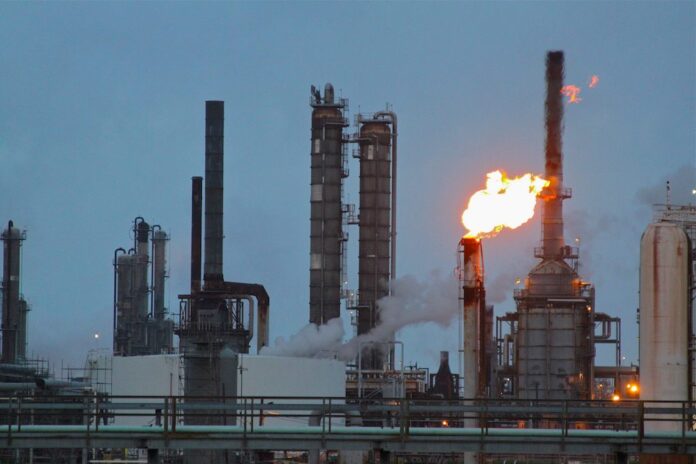TOKYO: Oil prices fell on Thursday as some investors scooped up profits from the recent rally, though solid demand in the United States and a switch to fuel oil from coal and gas amid surging prices capped losses.
Brent crude futures fell 54 cents, or 0.6%, to $85.28 a barrel by 0649 GMT, turning down from earlier gains that took the benchmark to the highest since October 2018. It rose 0.9% the previous day.
US West Texas Intermediate (WTI) crude futures for December dropped 33 cents, or 0.4%, to $83.09 a barrel. November WTI crude, which expired on Wednesday, settled up 91 cents, or 1.1%, after touching the highest since October 2014 earlier in the session.
“We saw some correction, but overall sentiment remained firm as there have been no large increases in output by the United States or OPEC,” said Satoru Yoshida, a commodity analyst with Rakuten Securities.
“Brent could reach $90 a barrel later this year as tightness in global oil markets will likely continue as US decarbonisation efforts will cap output increases while demand will increase as more power companies switch fuel from coal and gas,” he said.
Crude prices have risen as supply has tightened, with the Organization of the Petroleum Exporting Countries (OPEC) maintaining a slow increase in supply rather than intervening to add more barrels to the market.
Oil refiners are ramping up output to meet a synchronised uptick in demand across Asia, Europe and the United States, but plant maintenance and high natural gas prices are expected to constrain supply in the fourth quarter.
Oil markets hit multi-year highs this week, also supported by a global coal and gas crunch, which has driven a switch to diesel and fuel oil for power generation.
Strong demand in the United States was confirmed by the latest weekly data.
US crude stocks fell by 431,000 barrels in the week to Oct. 15 to 426.5 million barrels, compared with analysts’ expectations in a Reuters poll for a 1.9 million-barrel rise, the US Energy Information Administration (EIA) said on Wednesday.
US stocks at the Cushing, Oklahoma delivery hub hit their lowest level since October 2018, pointing to tightness in the market that may take some time to alleviate.
US gasoline stocks fell by a more-than-expected 5.4 million barrels to 217.7 million barrels, the lowest since November 2019, the EIA said, while distillate stocks fell to levels not seen since April 2020.
“Crude oil inventories at Cushing have been drawing dramatically, supporting WTI flat price and structure, with the backwardation on the prompt end of the WTI curve strengthening above 50 cents,” Citi Research said in a note, noting the trend comes despite the autumn maintenance season.
In a sign of market tightness, WTI futures contracts are currently in steep backwardation, where later-dated contracts trade are at a lower price than the current contract. Normally later months trade at a higher price, reflecting the costs of storing oil.
The steep backwardation encourages companies to sell oil immediately rather than keep it in storage.




